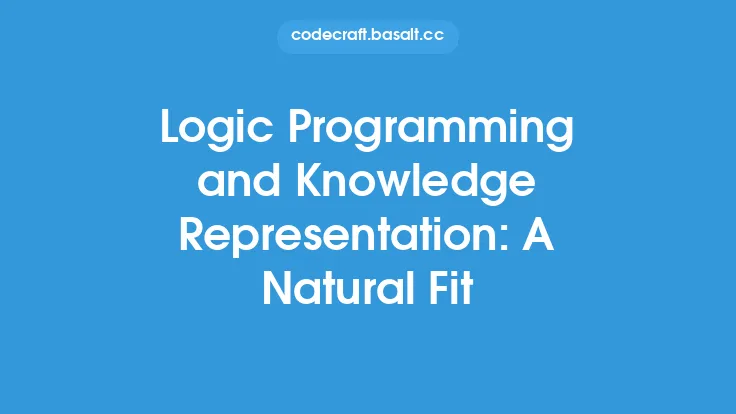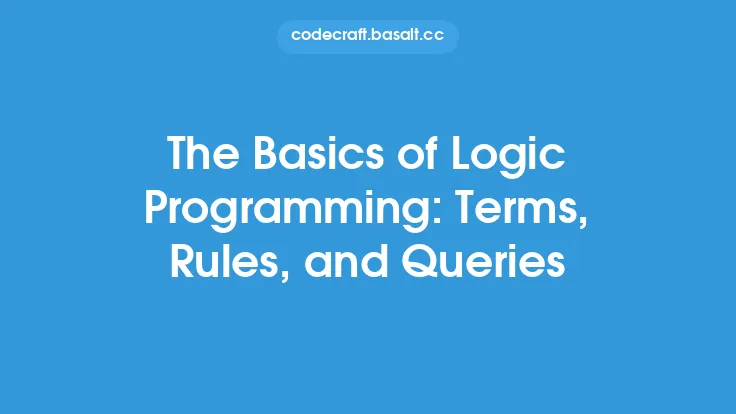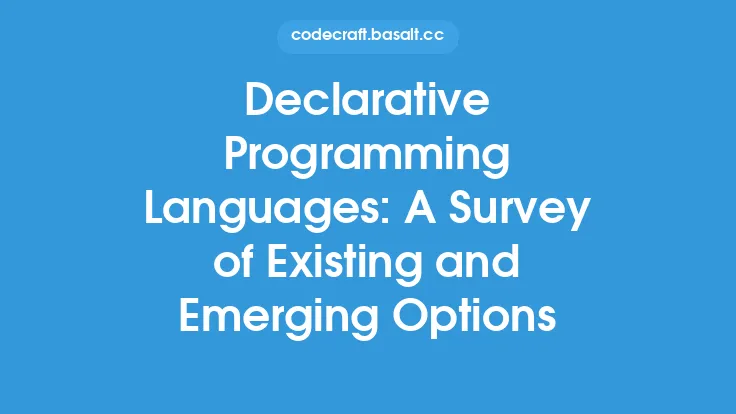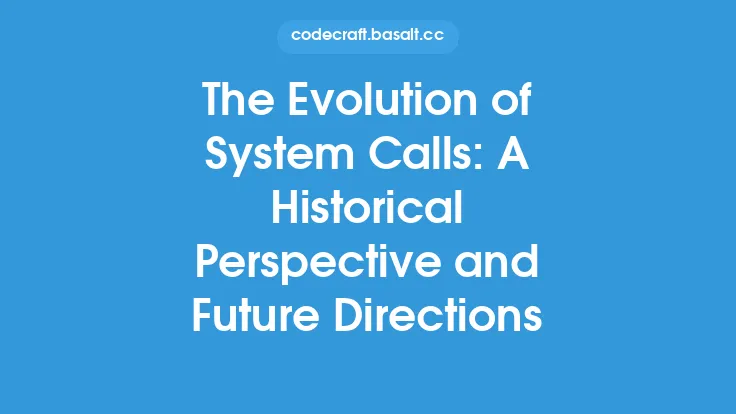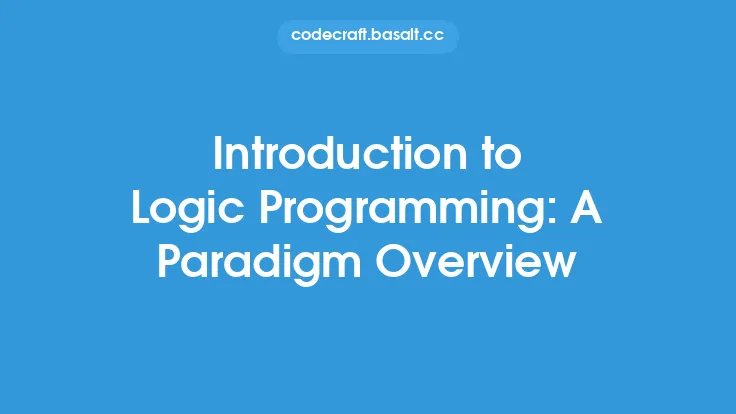The connection between logic programming and artificial intelligence (AI) dates back to the early days of computer science. In the 1950s and 1960s, researchers began exploring ways to use logical reasoning to solve complex problems, laying the foundation for the development of AI. This historical connection is rooted in the idea that logical reasoning can be used to represent knowledge and make decisions, which is a fundamental aspect of AI.
Early Beginnings: Theoretical Foundations
The theoretical foundations of logic programming were laid by mathematicians and logicians such as Bertrand Russell, Kurt Gödel, and Alan Turing. Their work on formal logic, recursive functions, and the theoretical foundations of computation provided the basis for the development of logic programming languages. In the 1960s, researchers such as Alan Newell and Herbert Simon began exploring the use of logical reasoning in AI, leading to the development of the first AI programs.
The Emergence of Logic Programming Languages
The first logic programming language, Prolog, was developed in the 1970s by a team of researchers led by Alain Colmerauer. Prolog was designed to be a general-purpose programming language that used logical reasoning to solve problems. The language was based on formal logic and used a syntax that was similar to mathematical notation. Prolog's success led to the development of other logic programming languages, such as Lisp and Mercury, which are still used today.
Artificial Intelligence and Logic Programming
The connection between AI and logic programming is rooted in the idea that logical reasoning can be used to represent knowledge and make decisions. AI systems use logical rules to reason about the world and make decisions based on that reasoning. Logic programming languages provide a natural fit for AI applications, as they allow developers to represent knowledge and rules in a formal and structured way. This has led to the development of a wide range of AI applications, including expert systems, natural language processing, and computer vision.
Expert Systems and Logic Programming
One of the earliest and most successful applications of logic programming in AI was the development of expert systems. Expert systems are computer programs that mimic the decision-making abilities of a human expert in a particular domain. They use logical rules to reason about the domain and make decisions based on that reasoning. Logic programming languages, such as Prolog, were well-suited for building expert systems, as they allowed developers to represent knowledge and rules in a formal and structured way.
Natural Language Processing and Logic Programming
Logic programming has also been used in natural language processing (NLP) applications, such as language translation and text summarization. NLP systems use logical rules to reason about the meaning of language and generate text based on that reasoning. Logic programming languages, such as Prolog, have been used to build NLP systems that can parse and generate language, as well as reason about the meaning of language.
Computer Vision and Logic Programming
Computer vision is another area where logic programming has been used in AI applications. Computer vision systems use logical rules to reason about the visual world and recognize objects and patterns. Logic programming languages, such as Prolog, have been used to build computer vision systems that can recognize objects and patterns, as well as reason about the visual world.
The Future of Logic Programming and AI
The connection between logic programming and AI is likely to continue to grow in the future. As AI systems become more complex and sophisticated, they will require more powerful and flexible programming languages to represent knowledge and rules. Logic programming languages, such as Prolog and Mercury, are well-suited for building complex AI systems, as they allow developers to represent knowledge and rules in a formal and structured way. Additionally, the development of new logic programming languages and techniques, such as answer set programming and constraint logic programming, is likely to lead to new and innovative AI applications.
Conclusion
In conclusion, the connection between logic programming and AI is a historical and ongoing one. From the early beginnings of theoretical foundations to the emergence of logic programming languages, the connection between logic programming and AI has been rooted in the idea that logical reasoning can be used to represent knowledge and make decisions. As AI systems continue to evolve and become more complex, the use of logic programming languages and techniques is likely to play an increasingly important role in the development of AI applications.
